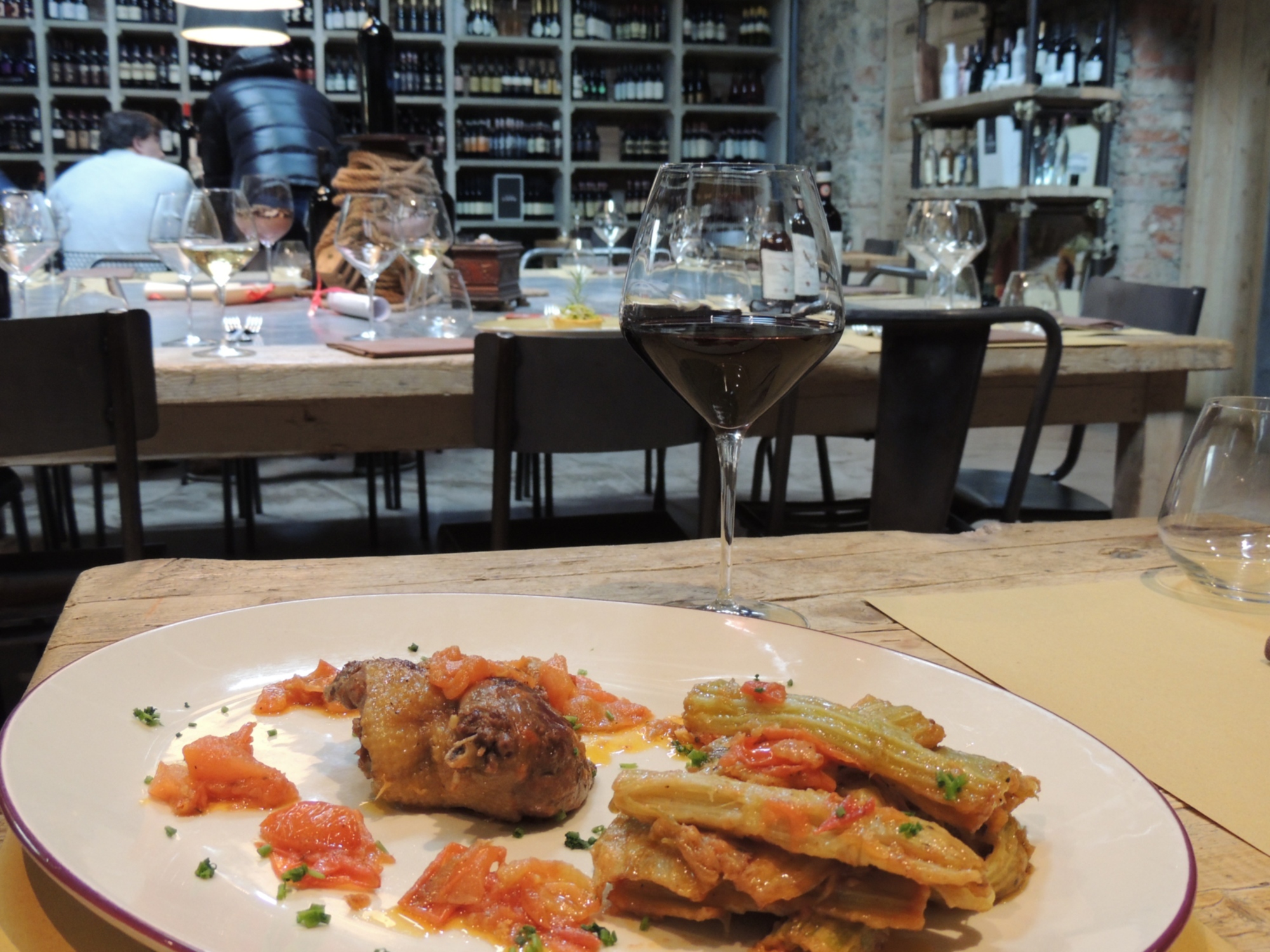Chianti DOCG


One of the world's most famous Tuscan wines
Chianti has always been the quintessential Tuscan wine, a product that has made its region of origin famous all over the world and that still today, even in its many types deriving from sometimes different production areas, keeps the prestige of Italian oenology high on international markets. Although some jokingly call it Chiantishire because of the high attendance of British and Americans.
Chianti DOCG can be produced in various parts of Tuscany, which form Italy's largest wine-growing region, covering all or part of more than 100 municipalities in the provinces of Arezzo, Florence, Pisa, Pistoia, Prato and Siena.
The first delimitation regarding Chianti wine dates back to 1932, while the designation of controlled origin dates back to 1967, and in 1984 the designation of controlled and guaranteed origin was recognized. The designation Chianti may be supplemented by the specification Superiore (Superior) as well as the geographical specifications Colli Aretini, Colli Fiorentini, Colli Senesi, Colline Pisane, Montalbano, Rufina and Montespertoli, corresponding to their respective geographical subzones.
The grape varieties
The fundamental grape varieties that contribute to the formation of the Chianti vineyard are as follows: Sangiovese (minimum 75%), black Canaiolo (up to 10%), Trebbiano Toscano and Malvasia del Chianti (up to 10%), complementary red grapes (up to 10%). The maximum grape yield per hectare is 90 quintals, which drops to 80 for the subzones and 75 for the Superiore specification.
Chianti wine may not be released for consumption prior to March 1 of the vintage year following the vintage year in which the grapes were produced, with the exception of Chianti Colli Fiorentini, Rufina and Superiore, for which the release date begins on September 1, and Chianti Montespertoli, for which that date begins on June 1. The Riserva type must undergo aging of at least two years, beginning on January 1 following the vintage year of the grapes, with at least three months of bottle aging.
The fundamental grape varieties that contribute to the formation of the Chianti vineyard are as follows: Sangiovese (minimum 75%), black Canaiolo (up to 10%), Trebbiano Toscano and Malvasia del Chianti (up to 10%), complementary red grapes (up to 10%). The maximum grape yield per hectare is 90 quintals, which drops to 80 for the subzones and 75 for the Superiore specification.
Chianti wine may not be released for consumption prior to March 1 of the vintage year following the vintage year in which the grapes were produced, with the exception of Chianti Colli Fiorentini, Rufina and Superiore, for which the release date begins on September 1, and Chianti Montespertoli, for which that date begins on June 1. The Riserva type must undergo aging of at least two years, beginning on January 1 following the vintage year of the grapes, with at least three months of bottle aging.
Organoleptic characteristics
The characteristics of Chianti are: vibrant ruby color, tending to garnet with aging; harmonious, dry, savory, slightly tannic flavor that refines with time to velvety soft; intensely winy aroma sometimes with a scent of violets and with a more pronounced character of finesse in the aging stage.
The minimum alcohol content is 11.5° and 12° for some subzones (Colli Fiorentini, Rufina and Montespertoli), for Chianti Superiore and for Riserva. In the case of Chianti Riserva referring to the subzones, the minimum alcohol content is 12.5°.
The characteristics of Chianti are: vibrant ruby color, tending to garnet with aging; harmonious, dry, savory, slightly tannic flavor that refines with time to velvety soft; intensely winy aroma sometimes with a scent of violets and with a more pronounced character of finesse in the aging stage.
The minimum alcohol content is 11.5° and 12° for some subzones (Colli Fiorentini, Rufina and Montespertoli), for Chianti Superiore and for Riserva. In the case of Chianti Riserva referring to the subzones, the minimum alcohol content is 12.5°.
Food and wine
Chianti can be consumed, for some types, as a young wine, fresh and pleasing to the palate, but it is also well known, for some areas, the vocation for medium and long aging, with which it acquires unmistakable aromas and flavors. In its great variety, Chianti is a wine for every occasion. Some areas produce young wines suitable for "the whole meal", as well as for first courses with ragout sauces, boiled and stews; in others, more structured, moderately aged wines that go well with poultry and roast white meats; finally, where there are wines of great character, alcoholic content and aging, their most suitable pairing is with roasts, game and aged cheeses. In fact, a young Chianti can also be a worthy accompaniment to a savory cacciucco.
Information: consorziovinochianti.it
Chianti can be consumed, for some types, as a young wine, fresh and pleasing to the palate, but it is also well known, for some areas, the vocation for medium and long aging, with which it acquires unmistakable aromas and flavors. In its great variety, Chianti is a wine for every occasion. Some areas produce young wines suitable for "the whole meal", as well as for first courses with ragout sauces, boiled and stews; in others, more structured, moderately aged wines that go well with poultry and roast white meats; finally, where there are wines of great character, alcoholic content and aging, their most suitable pairing is with roasts, game and aged cheeses. In fact, a young Chianti can also be a worthy accompaniment to a savory cacciucco.
Information: consorziovinochianti.it



